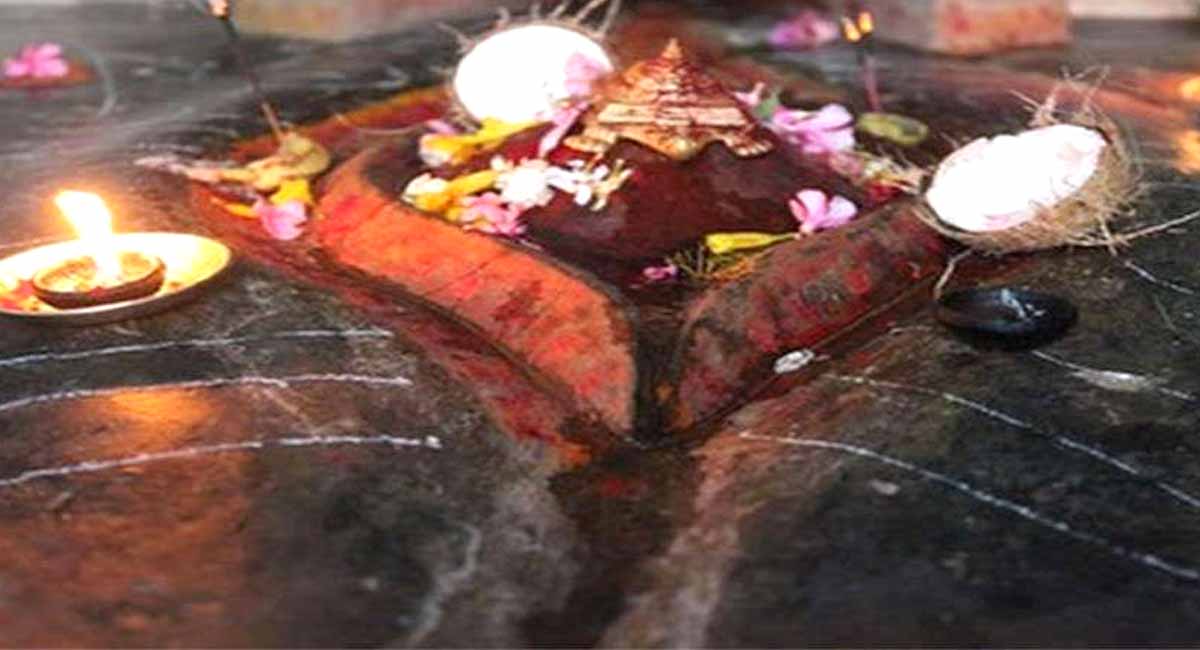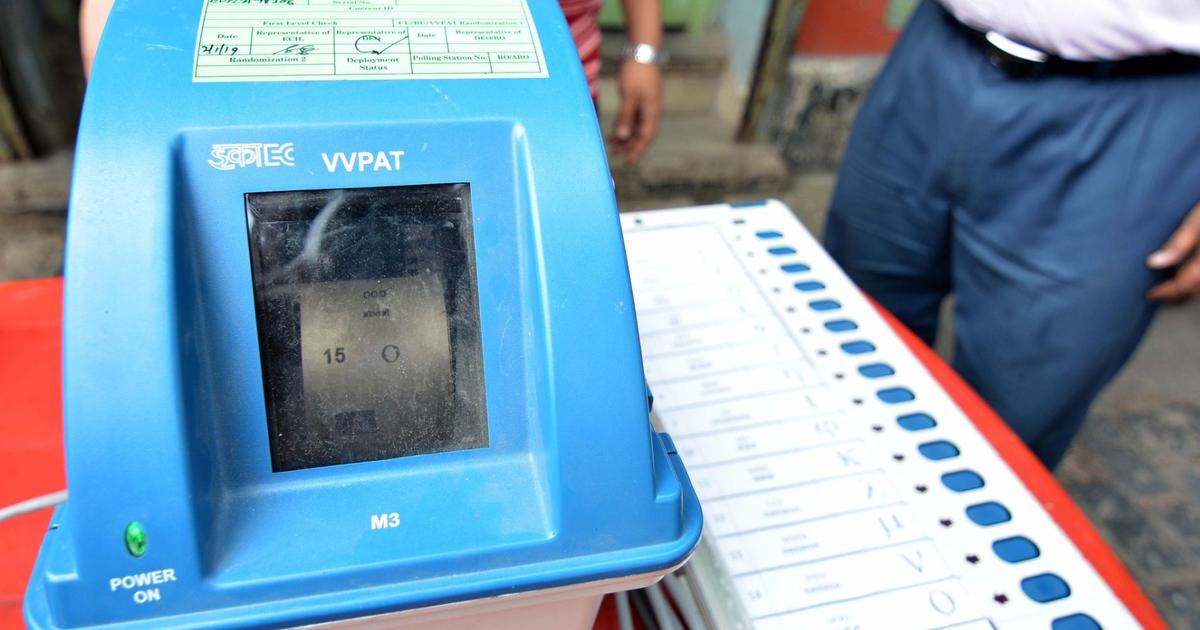Kamakhya Devi Temple is a revered Hindu temple located in Guwahati, Assam, India. It is one of the oldest and most significant Shakti Peethas (holy shrines dedicated to the worship of the goddess) in India. The temple is dedicated to the goddess Kamakhya, who is worshipped as the ultimate goddess of power and fertility.
Brief History of the Temple
The history of Kamakhya Devi Temple dates back to the 8th century AD. It was originally built by the Kamarupa dynasty, and was later rebuilt by the Ahom kings in the 17th century. The temple has undergone several renovations and modifications over the years, but its unique design and architecture have remained intact.
The Controversy Surrounding the Temple and Menstruation
The temple is known for its controversial association with menstruation. According to legend, the goddess Kamakhya menstruates annually during the Ambubachi Mela, a festival held in the month of June. This event is considered to be a symbol of the power of female fertility and is celebrated with great fervor by devotees.
However, the temple has also faced controversy due to the taboo surrounding menstruation in Indian society. Women are traditionally not allowed to enter the temple during their menstrual cycle, as it is believed that they are impure during this time. This has sparked debates over gender equality and the right to access religious spaces.
The Legend of Kamakhya Devi
The Story Behind the Temple’s Origin
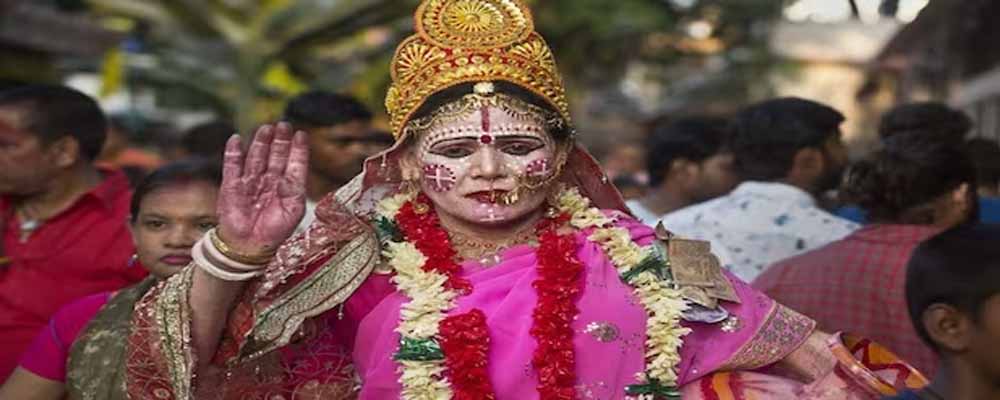
According to Hindu mythology, Kamakhya Devi Temple is associated with the legend of Shiva and his consort Sati. It is believed that after Sati’s death, her body was dismembered and scattered across various parts of India. The temple is said to be located at the spot where Sati’s womb and vagina fell to the ground.
The Significance of the Goddess in Hindu Mythology
Kamakhya Devi is worshipped as the goddess of power and fertility. She is considered to be an embodiment of female energy and is revered as a symbol of womanhood. The goddess is worshipped in various forms across India, and is associated with different aspects of life such as motherhood, love, and prosperity.
The legend of Kamakhya Devi’s menstruation is an important aspect of the temple’s history and significance. According to the legend, the goddess menstruates annually during the Ambubachi Mela, which is celebrated in the month of June. It is believed that during this time, the goddess’s power and energy are at their peak. The temple is closed for three days during the festival, after which the goddess is bathed and worshipped as a symbol of fertility and regeneration.
The legend of Kamakhya Devi’s Menstruation and its Importance
The legend of Kamakhya Devi’s menstruation is significant as it celebrates the power of female fertility and challenges the taboo surrounding menstruation in Indian society. It is believed that the goddess’s menstruation is a natural and sacred process, and should be celebrated rather than stigmatized. The temple’s association with menstruation has also given it a unique place in Hindu mythology and has attracted devotees from all over India.
The Architecture and Design of Kamakhya Devi Temple
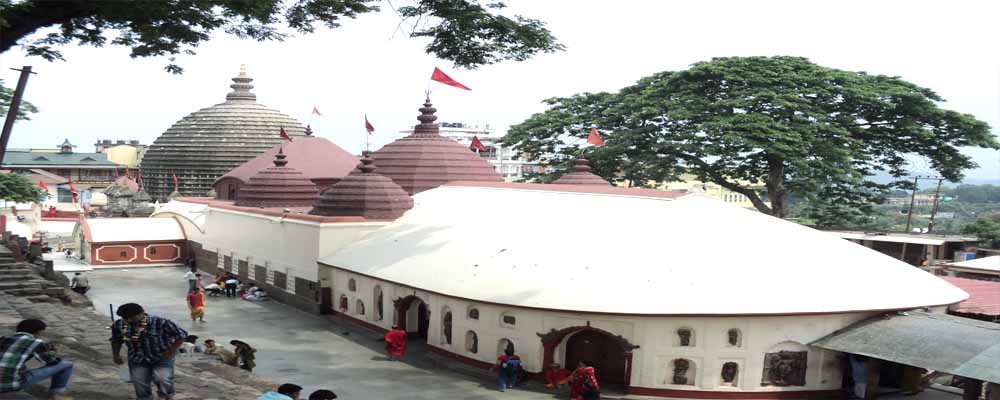
The Temple’s Location and Layout
Kamakhya Devi Temple is located atop the Nilachal Hill in Guwahati, Assam, overlooking the Brahmaputra River. The temple complex covers an area of around 6 acres and consists of several shrines and temples dedicated to various deities.
The Different Parts of the Temple and Their Significance
The temple complex is divided into three main parts: the Garbhagriha, the Mandapa, and the Calanta. The Garbhagriha is the inner sanctum of the temple where the main idol of Kamakhya Devi is located. The Mandapa is the hall where devotees gather to offer their prayers and offerings. The Calanta is the rear part of the temple complex, which houses the temple kitchen and other administrative offices.
The Unique Design Elements of the Temple
The unique design elements of Kamakhya Devi Temple are one of the main attractions of the temple complex. The temple’s architecture is a blend of different styles, including the Kalinga style and the Sino-Tibetan style. The temple’s roof is shaped like a beehive, and is covered with copper plates that give it a distinctive golden hue.
One of the most unique features of the temple is the absence of a statue or idol of the goddess Kamakhya. Instead, the main deity is represented by a natural rock formation in the shape of a yoni (a symbol of female energy and fertility). The yoni is covered with a red cloth, which is removed only during the Ambubachi Mela, when the goddess is believed to be menstruating.
The temple complex also houses several smaller shrines dedicated to other deities, including Kali, Tara, Bhairavi, and Chinnamasta. Each shrine has its own unique design and architectural style, and is believed to hold immense spiritual significance for devotees.
The Festivals and Celebrations at Kamakhya Devi Temple
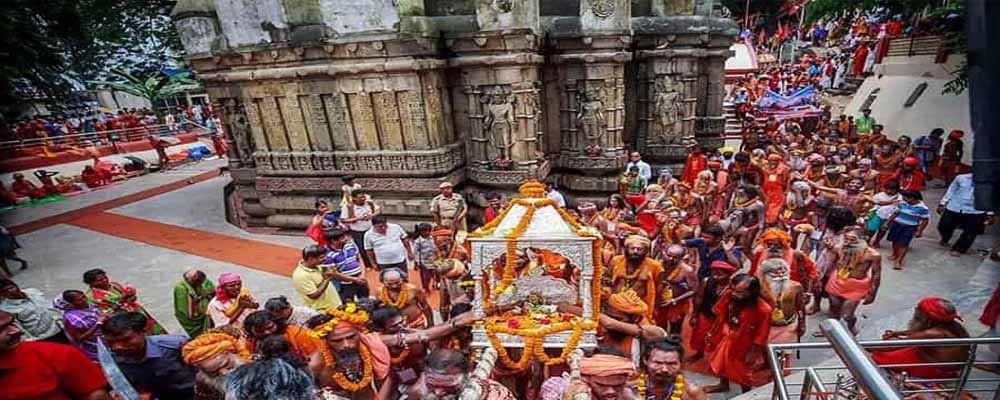
The Annual Ambubachi Mela and its Significance
The annual Ambubachi Mela is one of the most important festivals celebrated at Kamakhya Devi Temple. It is believed to be the time when the goddess Kamakhya menstruates, and is celebrated in the month of June every year. The temple is closed for three days during the festival, and reopens on the fourth day when the goddess is bathed and worshipped.
The festival is a celebration of fertility and regeneration, and is attended by thousands of devotees from all over India. During the festival, the temple complex is decorated with flowers and lights, and various cultural programs and events are organized to entertain the devotees. The festival is also an occasion for tantric rituals and practices, and many sadhus and tantriks visit the temple during this time.
Other Festivals Celebrated at the Temple
Apart from the Ambubachi Mela, Kamakhya Devi Temple also celebrates several other festivals throughout the year. Some of the important festivals celebrated at the temple include Durga Puja, Navaratri, Diwali, and Holi. Each festival is celebrated with great pomp and show, and is attended by a large number of devotees.
The Rituals and Practices Observed During These Festivals
The rituals and practices observed during these festivals vary depending on the festival and the deity being worshipped. For example, during Durga Puja, the goddess Durga is worshipped with great devotion and several rituals are performed to appease her. Similarly, during Navaratri, nine forms of the goddess are worshipped over a period of nine days.
The Controversy Surrounding Menstruation and Kamakhya Devi Temple
The Belief that the Goddess Menstruates and its Significance
The belief that the goddess menstruates is a religious belief held by some Hindus in India. The belief is that the goddess, usually referring to Devi or Shakti, the divine feminine energy, menstruates. This belief is linked to the idea that menstruation is a symbol of fertility and creative power.
The significance of this belief is that it is seen as a celebration of the divine feminine and a recognition of the power of women. It is also believed that this recognition of the goddess’s menstruation can lead to an understanding and acceptance of menstruation as a natural and essential aspect of a woman’s life.
The Taboo Around Menstruation in Indian Society
However, the taboo around menstruation in Indian society is still prevalent. Menstruation is often considered impure and dirty, and women are expected to avoid certain activities and places during their periods. This taboo around menstruation has led to discrimination against women and girls, including limited access to education, employment, and healthcare.
The Controversy over Allowing Women to Enter the Temple During their Menstrual Cycle
The controversy over allowing women to enter the temple during their menstrual cycle is a result of this taboo. Some Hindu temples in India prohibit women of menstruating age from entering the temple, citing the belief that menstruating women are impure and their presence in the temple could defile the sanctity of the temple. This practice has been challenged by women’s rights activists and has become a subject of debate and controversy in India.
In recent years, there have been efforts to break the taboo around menstruation and promote menstrual hygiene and education. The Indian government has launched initiatives such as the Swachh Bharat Abhiyan and Beti Bachao, Beti Padhao to promote menstrual hygiene and education. Many NGOs and social activists are also working to raise awareness and eliminate the stigma surrounding menstruation.
Can We Visit Kamakhya Temple During Periods?
Yes, you can visit the Kamakhya Temple during your menstrual cycle. Unlike some other Hindu temples that restrict entry for women during menstruation, the Kamakhya Temple in Guwahati, Assam, does not impose any such restrictions. In fact, the temple celebrates the fertility aspect of the goddess Kamakhya, and her menstruation cycle is revered during the Ambubachi Mela, a yearly festival held at the temple.
However, it’s important to note that personal beliefs and customs may vary among individuals and communities. Some women may choose not to visit temples during their periods due to personal or cultural reasons. It is always advisable to respect individual beliefs and practices when visiting religious sites.
The Role of Women in Kamakhya Devi Temple
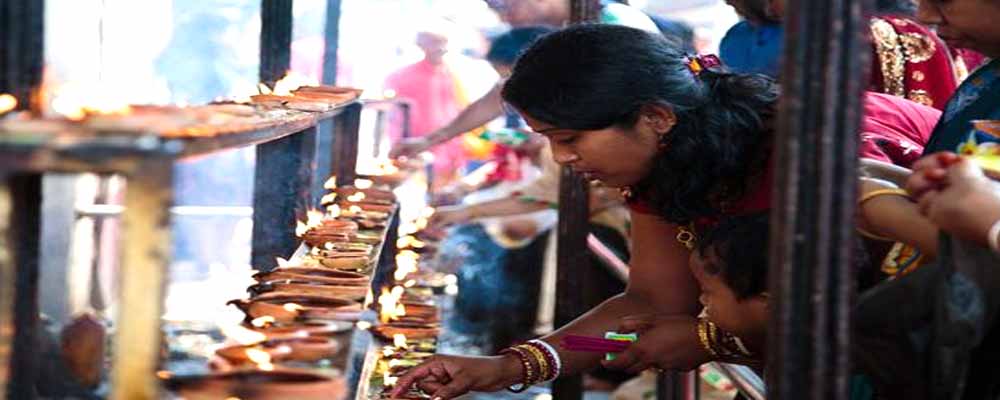
The importance of women in the temple’s rituals and practices
The role of women in the temple’s rituals and practices is significant. In many Hindu temples, women play an essential role in the worship and offerings to the deities. They are involved in various rituals, such as puja, bhajans, and aartis, and are responsible for maintaining the temple’s cleanliness and sanctity.
The Role of the Devi’s Menstruation in Empowering Women
The importance of Devi’s menstruation in empowering women lies in the belief that menstruation is a symbol of fertility and creative power. It is believed that Devi’s menstruation represents her divine feminine energy, which is the source of all creation. Therefore, recognizing Devi’s menstruation can lead to an understanding and acceptance of menstruation as a natural and essential aspect of a woman’s life. This recognition can empower women and give them a sense of pride and self-worth.
The Challenges Faced by Women in Participating in Temple Activities
However, there are challenges faced by women in participating in temple activities, particularly during their menstrual cycle. Many temples prohibit women from entering during their periods, citing religious beliefs and customs. This exclusion of women from the temple has been criticized as discriminatory and has sparked debates and protests.
In recent years, there have been efforts to challenge this exclusion and promote gender equality in temple practices. Women’s rights activists and NGOs are working to create awareness about menstrual health and hygiene, challenge discriminatory customs and practices, and promote women’s participation in temple activities. The Indian government has also taken steps to address this issue, and in 2018, the Supreme Court of India lifted the ban on women of menstruating age from entering the Sabarimala temple in Kerala. However, more work is needed to ensure that women are treated equally and can participate in temple activities without any discrimination or barriers.
The Influence of Kamakhya Devi Temple on Assamese Culture
The Temple’s Impact on Assamese Art, Music, and Literature
The temple has had a significant impact on Assamese art, music, and literature. The temple’s rich cultural heritage has been a source of inspiration for many artists, musicians, and writers in Assam. The temple’s architecture, sculptures, and paintings have influenced Assamese art, while its devotional music has inspired Assamese classical music. Assamese literature has also been enriched by the temple’s mythologies, legends, and folklore.
The Role of the Temple in Shaping Assamese Cultural Identity
The role of the temple in shaping Assamese cultural identity is crucial. The temple is not only a religious institution but also a cultural and social center. It has played a vital role in preserving and promoting Assamese culture and traditions. The temple’s festivals, rituals, and practices are integral to Assamese culture, and they have helped to shape Assamese cultural identity.
The Preservation of the Temple’s Traditions and Practices in Modern-Day Assam
The preservation of the temple’s traditions and practices in modern-day Assam is essential. Many temples in Assam have faced challenges in preserving their heritage due to natural calamities, lack of resources, and changing social norms. However, efforts are being made to preserve and promote the temple’s traditions and practices. The Assam government has taken steps to preserve and restore the state’s ancient temples, and many NGOs and cultural organizations are working to document and promote the temple’s heritage. The temple’s festivals, such as Bihu and Durga Puja, continue to be celebrated with great enthusiasm and are an essential part of Assamese cultural life.
Kamakhya Devi Temple and Tourism
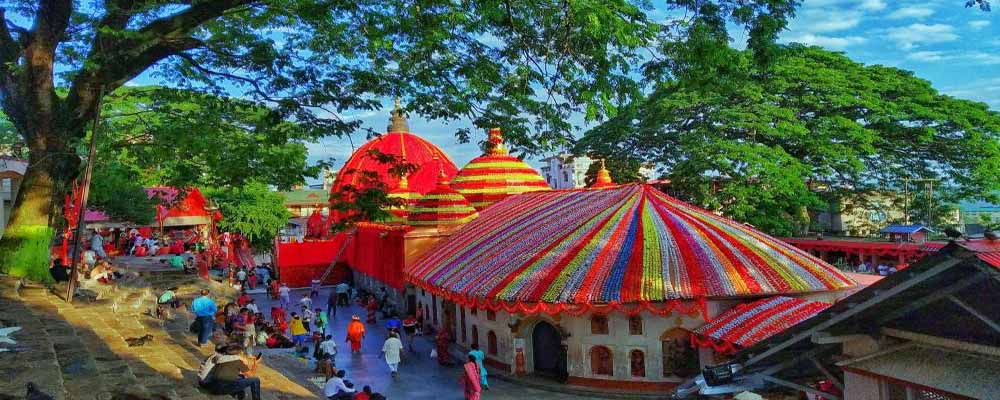
The Temple’s Significance as a Tourist Destination
The temple is a significant tourist destination in Assam, attracting thousands of visitors every year. The temple’s rich cultural heritage, historical significance, and natural surroundings make it a popular destination for both domestic and international tourists. The temple’s festivals, such as Bihu and Durga Puja, also attract many visitors who come to witness and participate in the celebrations.
The Impact of Tourism on the Temple and its Surroundings
The impact of tourism on the temple and its surroundings has been both positive and negative. Tourism has brought economic benefits to the local communities, providing opportunities for employment, entrepreneurship, and income generation. It has also helped to promote and preserve the temple’s heritage by creating awareness and appreciation among visitors.
However, tourism has also put pressure on the temple and its surroundings. The increased footfall of tourists has led to environmental degradation, littering, and deforestation. The infrastructure around the temple, such as roads, parking facilities, and accommodation, has also come under strain. The increased commercialization and commodification of the temple have also raised concerns about the commercial exploitation of religious sentiments.
The Challenges Faced by the Temple in Managing Tourism
The challenges faced by the temple in managing tourism are significant. The temple authorities need to strike a balance between promoting tourism and preserving the temple’s heritage and natural surroundings. They need to develop sustainable tourism practices that minimize the negative impacts of tourism while maximizing its benefits. This can include promoting responsible tourism, educating visitors about the temple’s heritage and significance, and regulating the activities of commercial operators around the temple.
The Future of Kamakhya Devi Temple
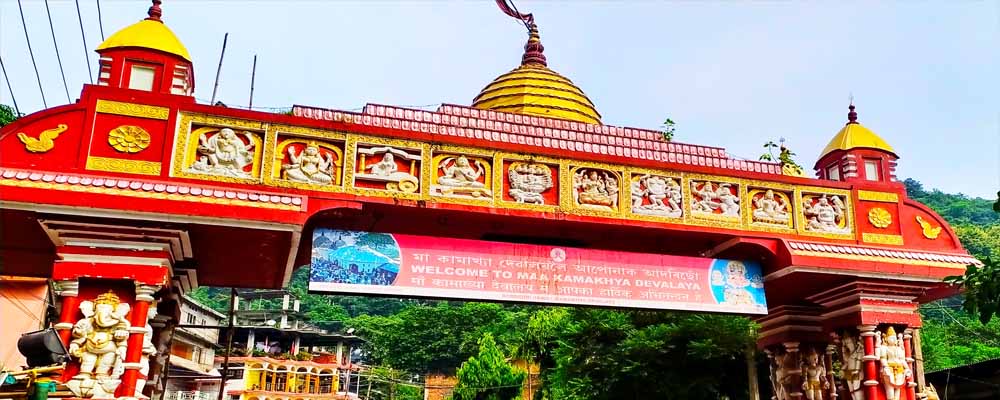
The Importance of Preserving the Temple’s Traditions and Practices
Preserving the temple’s traditions and practices is essential to maintain the temple’s cultural heritage and promote the values and beliefs associated with it. The temple’s traditions and practices are an essential part of Assamese culture and identity. They are also closely linked to the temple’s mythology, legends, and folklore, which have shaped the local culture and beliefs.
The Challenges Facing the Temple in the Modern World
The challenges facing the temple in the modern world are numerous. The temple’s natural surroundings and heritage are under threat from environmental degradation, urbanization, and changing social norms. The temple also faces challenges from the commodification and commercialization of religious practices, which can undermine the temple’s traditional values and beliefs. Additionally, the temple has to contend with challenges from new technologies and media that can affect the traditional modes of communication and dissemination of knowledge.
The Role of the Temple in Promoting Women’s Empowerment and Gender Equality
The temple has played an important role in promoting women’s empowerment and gender equality. The temple’s mythology, legends, and folklore have many powerful female deities, such as Durga and Kali, who are celebrated for their strength, courage, and compassion. The temple’s festivals, such as Bihu and Durga Puja, also provide opportunities for women to participate in cultural and social activities and assert their identity and agency. The temple authorities have also taken steps to promote gender equality by allowing women to participate in temple activities and removing discriminatory practices.
Conclusion
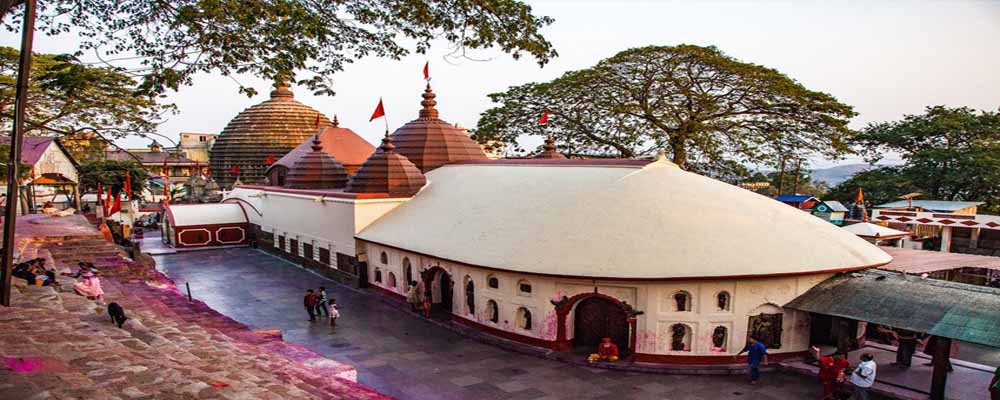
Summary of the Key Points Discussed in the Article
The article discusses the significance of the Kamakhya Temple in Assam, India, and its impact on various aspects of society. The temple is an important cultural and religious site, attracting tourists and devotees from all over the world. However, the temple faces many challenges in the modern world, including environmental degradation, commercialization, and changing social norms. The article also highlights the role of the temple in promoting women’s empowerment and gender equality, as well as its importance in shaping Assamese cultural identity. Finally, the article emphasizes the importance of preserving the temple’s traditions and practices to maintain its cultural heritage and promote its values and beliefs.
Reflection on the Significance of Kamakhya Devi Temple
beliefs of the people. The temple’s traditions and practices have been passed down through generations and are an integral part of Assamese identity.
The Kamakhya Devi Temple is also an important site for promoting women’s empowerment and gender equality. The temple celebrates and venerates powerful female deities, and its festivals provide women with opportunities to participate in cultural and social activities. The temple authorities have taken positive steps to remove discriminatory practices and promote gender equality.
However, the temple faces many challenges in the modern world. Environmental degradation, commercialization, and changing social norms are threatening the temple’s heritage and traditions. It is crucial to take action to preserve and promote the temple’s traditions and practices while being mindful of these challenges.
Call to Action for Preserving the Temple’s Traditions and Empowering Women
Preserving the traditions of the Kamakhya Devi Temple and empowering women requires a concerted effort from various stakeholders. As individuals, we can do our part by respecting the temple’s traditions and practices, avoiding practices that harm the environment, and participating in festivals and activities that promote gender equality.
At the community level, it is essential to raise awareness about the temple’s significance and educate people about its traditions and practices. This can be done through cultural programs, workshops, and awareness campaigns. It is also important to involve women in decision-making processes related to the temple’s management and ensure that their voices are heard.
The government can play a significant role in preserving the temple’s heritage and empowering women. The government should provide adequate resources for maintaining the temple’s infrastructure, protecting the environment, and promoting the temple’s cultural significance. Additionally, the government can implement policies and programs that promote gender equality, such as providing education and training for women.
Finally, the temple authorities have a crucial role to play in preserving the temple’s traditions and practices and promoting gender equality. The authorities should take steps to eliminate discriminatory practices, involve women in decision-making processes, and promote the temple’s cultural heritage. They can also work with the government and the community to raise awareness about the temple’s significance and the importance of preserving its traditions and practices.
In conclusion, preserving the traditions of the Kamakhya Devi Temple and empowering women is a collective effort that requires the participation of various stakeholders. By working together, we can ensure that the temple’s heritage is preserved for future generations, and women are empowered to participate fully in the temple’s activities and the wider community.
Kamakhya Devi Temple FAQs
What is the Kamakhya Devi Temple?
The Kamakhya Devi Temple is a Hindu temple located in Guwahati, Assam, India. It is one of the most important Shakti Peethas in India and is dedicated to the worship of the goddess Kamakhya.
Who is the bleeding goddess in Kamakhya Temple?
The bleeding goddess in Kamakhya Temple is believed to be an embodiment of the Hindu goddess Shakti. The temple is dedicated to the worship of this goddess, who is associated with fertility, sexuality, and the power of creation. The goddess is believed to menstruate during the Ambubachi Mela festival, which is celebrated annually in June or July. This event is considered to be a symbol of the goddess’s creative power and the cycle of life and death.
Can we go to Kamakhya Temple during periods?
As of now, there is no official ban on women entering the Kamakhya Temple during their menstrual cycle. However, some priests and devotees may discourage women from doing so due to traditional beliefs and practices. Ultimately, it is up to each individual to make a decision based on their beliefs and comfort level.
What is the significance of the Kamakhya Devi Temple?
The Kamakhya Devi Temple holds immense significance for the people of Assam and the wider Hindu community. It is a symbol of rich cultural heritage and spiritual significance, and its traditions and practices reflect the beliefs of the people.
What is the role of women in the Kamakhya Devi Temple?
Women play an important role in the Kamakhya Devi Temple’s rituals and practices. The temple celebrates and venerates powerful female deities, and its festivals provide women with opportunities to participate in cultural and social activities.
